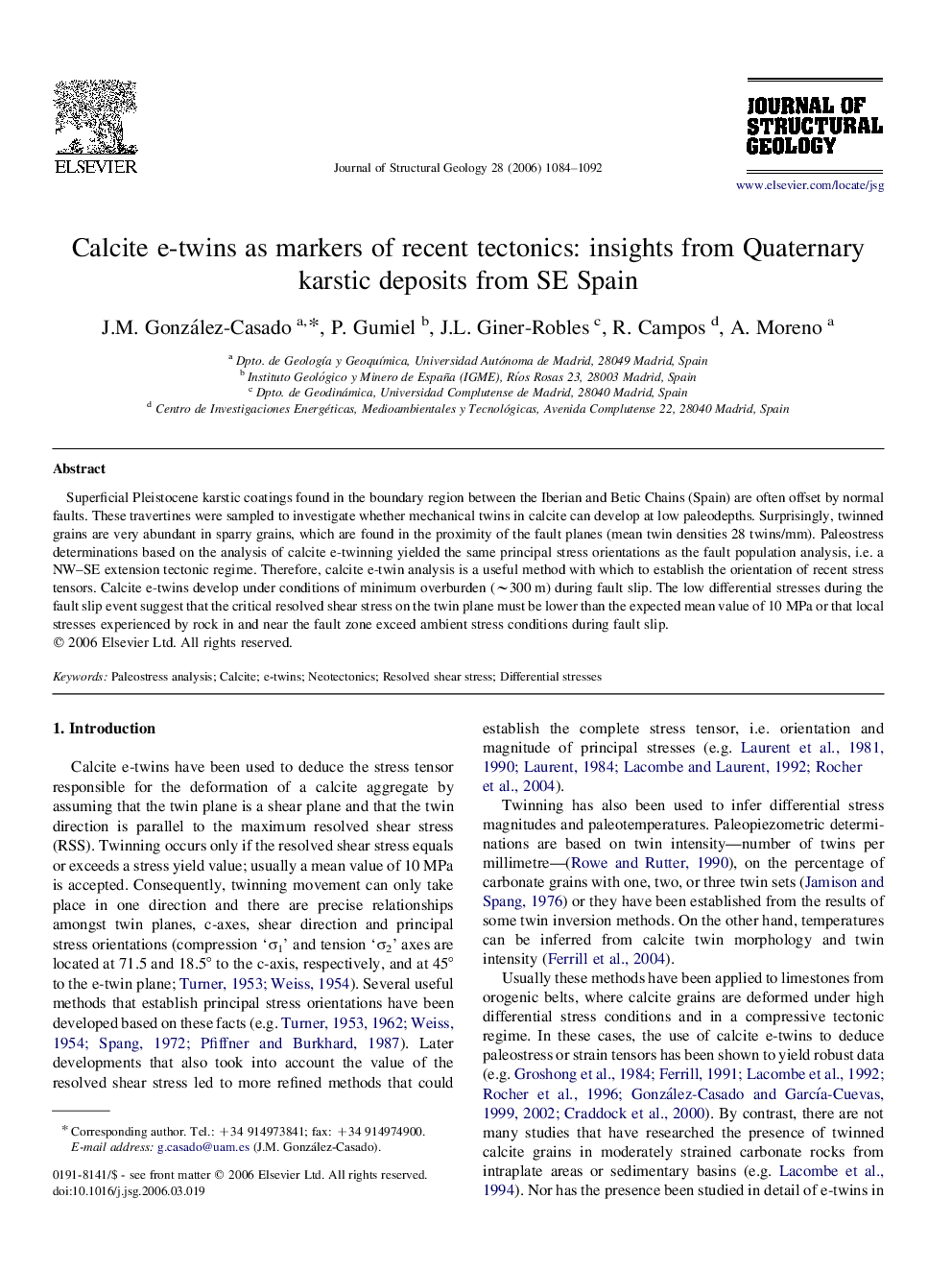| Article ID | Journal | Published Year | Pages | File Type |
|---|---|---|---|---|
| 4734516 | Journal of Structural Geology | 2006 | 9 Pages |
Superficial Pleistocene karstic coatings found in the boundary region between the Iberian and Betic Chains (Spain) are often offset by normal faults. These travertines were sampled to investigate whether mechanical twins in calcite can develop at low paleodepths. Surprisingly, twinned grains are very abundant in sparry grains, which are found in the proximity of the fault planes (mean twin densities 28 twins/mm). Paleostress determinations based on the analysis of calcite e-twinning yielded the same principal stress orientations as the fault population analysis, i.e. a NW–SE extension tectonic regime. Therefore, calcite e-twin analysis is a useful method with which to establish the orientation of recent stress tensors. Calcite e-twins develop under conditions of minimum overburden (∼300 m) during fault slip. The low differential stresses during the fault slip event suggest that the critical resolved shear stress on the twin plane must be lower than the expected mean value of 10 MPa or that local stresses experienced by rock in and near the fault zone exceed ambient stress conditions during fault slip.
